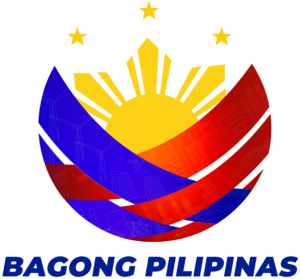GIRL POWER: THE WOMEN OF MALOLOS By: Quennie Ann J. Palafox When the Spaniards came into the Philippines, they brought with them their patriarchal values about women which eventually diffused into Philippine culture. The women during the Spanish period were tied to the house and their roles were confined exclusively to housekeeping continue reading : Girl Power: The Women of Malolos
Asia’s First: Remembering the Inauguration of the First Philippine Republic
ASIA’S FIRST: REMEMBERING THE INAUGURATION OF THE FIRST PHILIPPINE REPUBLIC by Peter Jaynul V. Uckung and Mona Lisa H. Quizon During the close of the 19th century, South East Asia was heavily colonized by Europeans. The French had Indochina, which included Camboadia, Laos and Vietnam. The Dutch controlled Indonesia and forced the natives there to continue reading : Asia’s First: Remembering the Inauguration of the First Philippine Republic
What Do Andres Bonifacio and India’s Bhagat Singh Have in Common?
WHAT DO ANDRES BONIFACIO AND INDIA’S BHAGAT SINGH HAVE IN COMMON His name is close to the proletariat because of his personal background and despite poverty, he led a revolution whose aim was to grant the country independence from colonial bondage. Andres Bonifacio is considered a national hero alongside Rizal because of continue reading : What Do Andres Bonifacio and India’s Bhagat Singh Have in Common?
Father Gregorio Crisostomo y Lugo
FATHER GREGORIO CRISOSTOMO Y LUGO Priest and Patriot (1860-1918) Father Gregorio Crisostomo y Lugo was the older brother of Mariano Crisostomo y Lugo, Propagandist, Katipunan member, revolutionist and Delegate of Bulacan province at the Malolos Congress. Gregorio and Mariano were nephews of Marcelo H. del Pilar1, one of the leaders of the Propaganda movements. continue reading : Father Gregorio Crisostomo y Lugo
The Abad Santos Brothers
THE ABAD SANTOS BROTHERS By: Quennie Ann J. Palafox Decades ago, the family name Abad Santos was widely-spoken in the political stream. The Abad Santos brothers gained prominence during the pre-Commonwealth Era and World War II because of their involvement in politics and social movement. Pedro, the older brother, was the founder of the Socialist continue reading : The Abad Santos Brothers
Ghosts of Martial Law
GHOSTS OF MARTIAL LAW By: Ricardo De Los Santos On September 23, 1972, Philippine President Ferdinand E. Marcos declared martial law in response to country-wide bombings, massive social unrest, and the threat of communist insurgents. For more than eight years, Martial Law dictated the actions and suppression of the Filipino nation – continue reading : Ghosts of Martial Law
APOLINARIO MABINI (1864-1903) Apolinario, the second of the eight sons of Inocencio Mabini and Dionisia Maranan, a peasant couple, was born on July 23, 1864 in barrio Talaga, Tanauan, Batangas. He showed early a rare intellect and proclivity for study. In Manila he won in 1881 continue reading :
The Kris and the Samurai
THE KRIS AND THE SAMURAI by Peter Jaynul V. Uckung The drums of war caught the Joloanos by surprise. Pearl Harbor was thousands of miles away, but the news of the Japanese bombing was so electrifying that a cloud of anxiety blanketed the island of Jolo. It was Dec. 8, 1941. War had finally continue reading : The Kris and the Samurai
Andres Bonifacio and the Katipunan
ANDRES BONIFACIO AND THE KATIPUNAN Andres Bonifacio was born on November 30, 1863 in a small hut at Calle Azcarraga, presently known as Claro M. Recto Avenue in Tondo, Manila. His parents were Santiago Bonifacio and Catalina de Castro. Andres was the eldest in a brood of five. His other siblings were Ciriaco, continue reading : Andres Bonifacio and the Katipunan
Here Comes the Dam
HERE COMES THE DAM (and we remember Macli-ing Dulag) By: Quennie Ann J. Palafox In September 26, 2009, Typhoon Ondoy flooded the streets of Manila Marikina, Pasig, Quezon City, and submerged the houses of the people living in the provinces of Laguna and Rizal. The water level at the Angat Dam in continue reading : Here Comes the Dam
Sultan of the River
SULTAN OF THE RIVER The Rise and Fall of Datu Uto of Buayan By: Quennie Ann J. Palafox In turning the page of our history, Maguindanao is barely mentioned in the chapter of Spanish occupation of the Philippines in comparison to Luzon and Visayas that are highlighted in history books. This can continue reading : Sultan of the River

